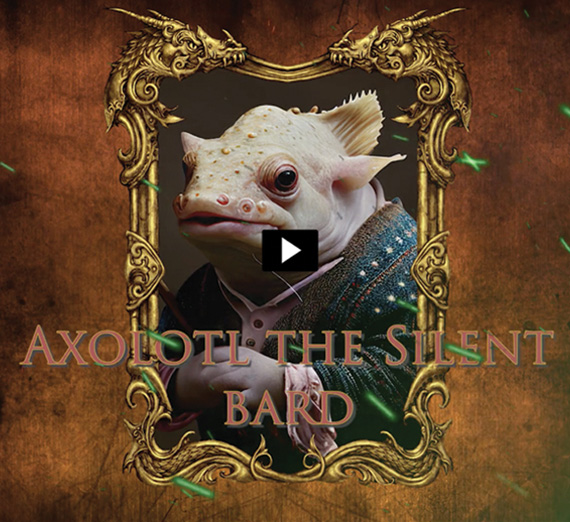Explaining and Applying Hybrid Pedagogy

We cannot separate ourselves from technology that mediates our daily lives; that manages our social lives; that dominates politics; that entertains us; and that helps to educate us. Upholding an artificial dichotomy between the two models limits both of them. A successful and transparent blending of these two delivery modes is the future of education. Hybridity is the future of both online and face-to-face education.
The three part series on hybridity in education by Peter Rorabaugh and Jesse Stommel in the online journal Hybrid Pedagogy examines the artificial dichotomy that has been established between virtual learning and the traditional or face-to-face model. The implications of examining all teaching and learning as happening on a digital/empirical continuum (Rorabaugh, 7 Feb., 2012) as opposed to an either or choice are significant and reveal a probable model for what the future of education holds.
What is Hybrid Pedagogy?
Scholar Jesse Stommel defines hybrid pedagogy in What is Hybrid Pedagogy?
“My hypothesis is that all learning is necessarily hybrid. In classroom-based pedagogy, it is important to engage the digital selves of our students. And, in online pedagogy, it is equally important to engage their physical selves. With digital pedagogy and online education, our challenge is not to merely replace (or offer substitutes for) face-to-face instruction, but to find new and innovative ways to engage students in the practice of learning”(Stommel, 9 March, 2012).
This blending of digital and face-to-face interactions is important because, as Stommel points out, it reflects the reality of the lives we live. Central to the idea of hybrid pedagogy is the redefining of space to be inclusive of both virtual and empirical domains so that the two realms will work together in new and dynamic ways.
- “Physical Learning Space / Virtual Learning Space
- Academic Space / Extra-academic Space
- On-ground Classrooms / Online Classrooms
- Permanent Faculty / Contingent Faculty
- Institutional Education / Informal Education
- Garden-walled Academia / Open Education
- Scholars / Teachers
- Academic Product / Learning Process
- Disciplinarity / Interdisciplinarity
- Performed (School-y) Selves / Real (Vulnerable) Selves
- Individual Teachers, Students, and Scholars / Collaborative Communities
- Learning in Schools / Learning in the World
- Analog Pedagogy / Digital Pedagogy
- Use of Tools / Critical Engagement with Tools
- Machine and Machine-like Interaction / Human Interaction
- Passive Learning / Experiential Learning
- Teaching and Learning / Critical Pedagogy”
- (9 March, 2012)
Hybrid pedagogy thus becomes a complex way of existing, seeing the world, mediating between the various domains of existence, and advancing education into the 21st century. It is our job as educators to seek a balance in the hybridity in ourselves and to help our students understand the subtle interplay of it in their lives.
Hybrid Pedagogy at Work
https://hybridpedagogy.org/ site do not offer specifics about the theory in action, or refer to any specific examples where it is clearly being manifested, they do offer the following about what it means from the teacher perspective:
“As technologically engaged teachers we create some experiences designed for engagement via electronic media. Our teaching, and the learning it encourages, is hybrid in that it combines the classroom space and the digital space”(Rorabaugh, 7 Feb., 2012).
- Course discussions start in either the virtual space or the classroom, transition to the other medium, and are summarized back in the first.
- Students engage in project/problem-based learning where they are using advanced information and communication technologies to research and synthesize knowledge, and to present their findings.
- Class-projects connect to real world clients either in the local community or virtually, and hi-tech tools are used to build and maintain those relationships.
- Real world experts and examples are incorporated into the class using collaborative technologies to engage in conversation, to explore diverse perspectives, or to participate in experiences that would not be possible locally.
- The results of course projects are shared with the wider community through in-person interaction/presentation and through virtual channels such as Twitter, Facebook, YouTube and discussion boards.
These are all hybrid methods that I (and certainly many other teachers) use and have used without ever articulating that I was engaging in “hybrid pedagogical” practices. The areas that I teach lend themselves very readily to this kind of mixed interaction. The authors are correct, our existence in a hybrid world dictates that we all must incorporate technology into our teaching to keep it relevant in the information age, and because it is natural to do so. What does the natural infiltration of hybrid pedagogy into the curriculum mean for the future of higher education?
What are the Implications?
As Rorabaugh points out in the first section of the hybridity series, life seldom falls into a true dichotomy, but rather lands somewhere along a continuum (7 Feb., 2012). At this moment, there is a misperception that online learning is an either or proposition that will either replace the traditional model or fall into obscurity. A focus on hybrid pedagogy brings to light that there is a third possibility for the two models to coexist. In fact, given the hybridized nature of humanity, the idea of supportive, interactive coexistence is the most logical choice.
As evidence of the pervasiveness of hybridity, in Technology is the Answer to Educational Reform (23, Jul., 2012) I wrote:
“These innovations are not dependent on whether learning happens online or in a face-to-face environment. They are relevant and realistic in both contexts and help to demonstrate the ways in which information age education does not need to rely exclusively on either model. But rather emphasizes that, when technology becomes the foundation of learning, a hybrid model is a natural outcome.”
In this piece I proposed the idea that making technology a central component of education would provide extensive benefits both to the system and those in it. What I hinted at, but did not fully realize at the time, was that a techno-centric curriculum would also signal a strong move towards hybrid pedagogy. This move is happening incrementally already, but a shift in the priorities of education to make technology more central would accelerate the pace.
Hybrid pedagogy is coming. It is already present in many classrooms in both K-12 and higher education. Time will bear out the truth that all things eventually settle into equilibrium. The battle in education between virtual learning and traditional classrooms will ultimately be decided in favor of – Hybridity.
- Academics
- School of Education
- Online Programs
- Foley Library




